Managing New Manifestations in a Patient with Chronic Conditions with Biotandem
In this video, we will explore how Biotandm can help when a patient with a chronic condition on long term medication develops a new finding in this case skin lesions.
In this video, we will explore how Biotandm can help when a patient with a chronic condition on long term medication develops a new finding in this case skin lesions.
If this patient is already in your biotandam recourse, the system recognizes that she is 28 years old woman with Crohn's disease asymptomatic under treatment with Adalimumab and Azathioprine now new skin lesions have appeared.
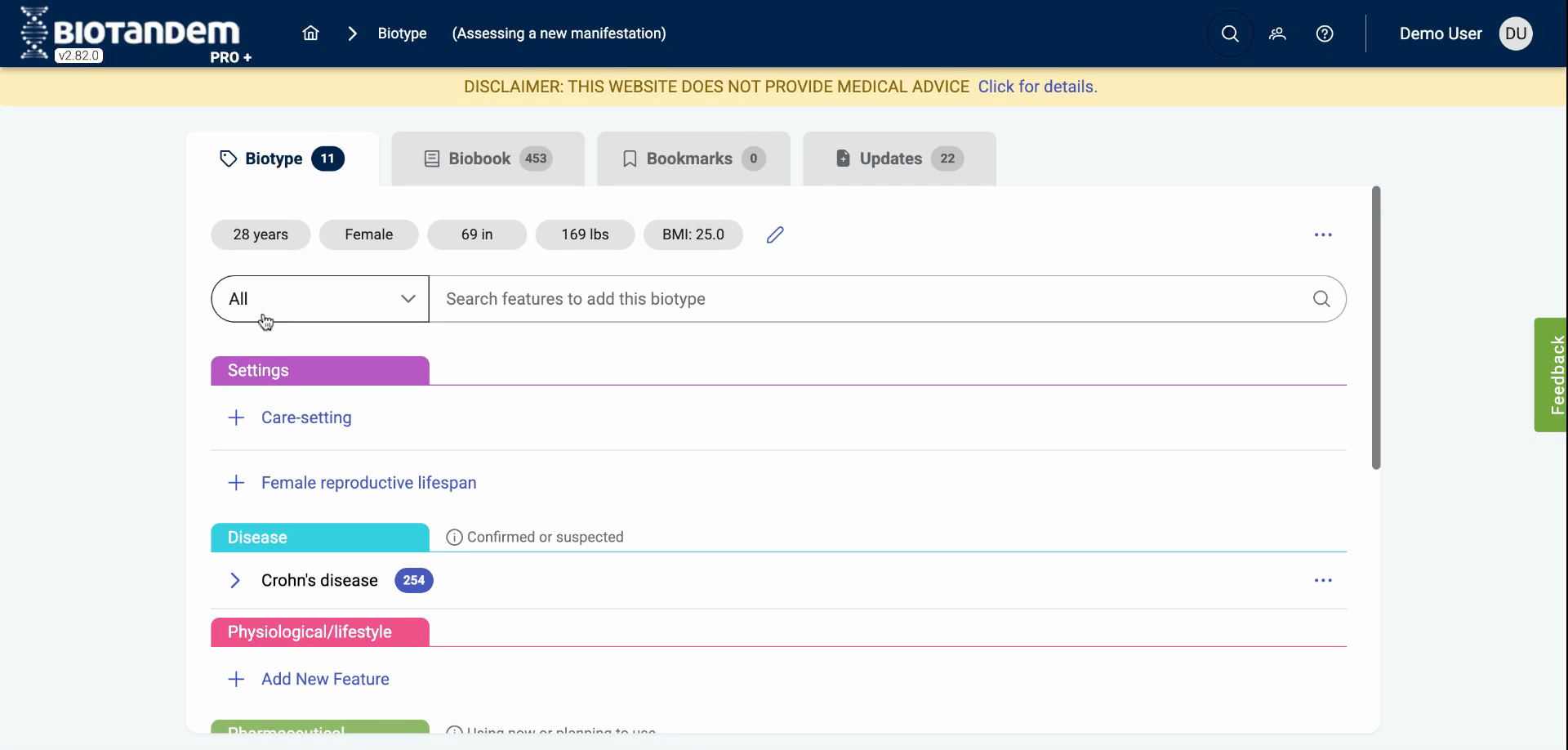
Could these be related to her disease or medications? To investigate, simply search for an skin lesion from the search bar.
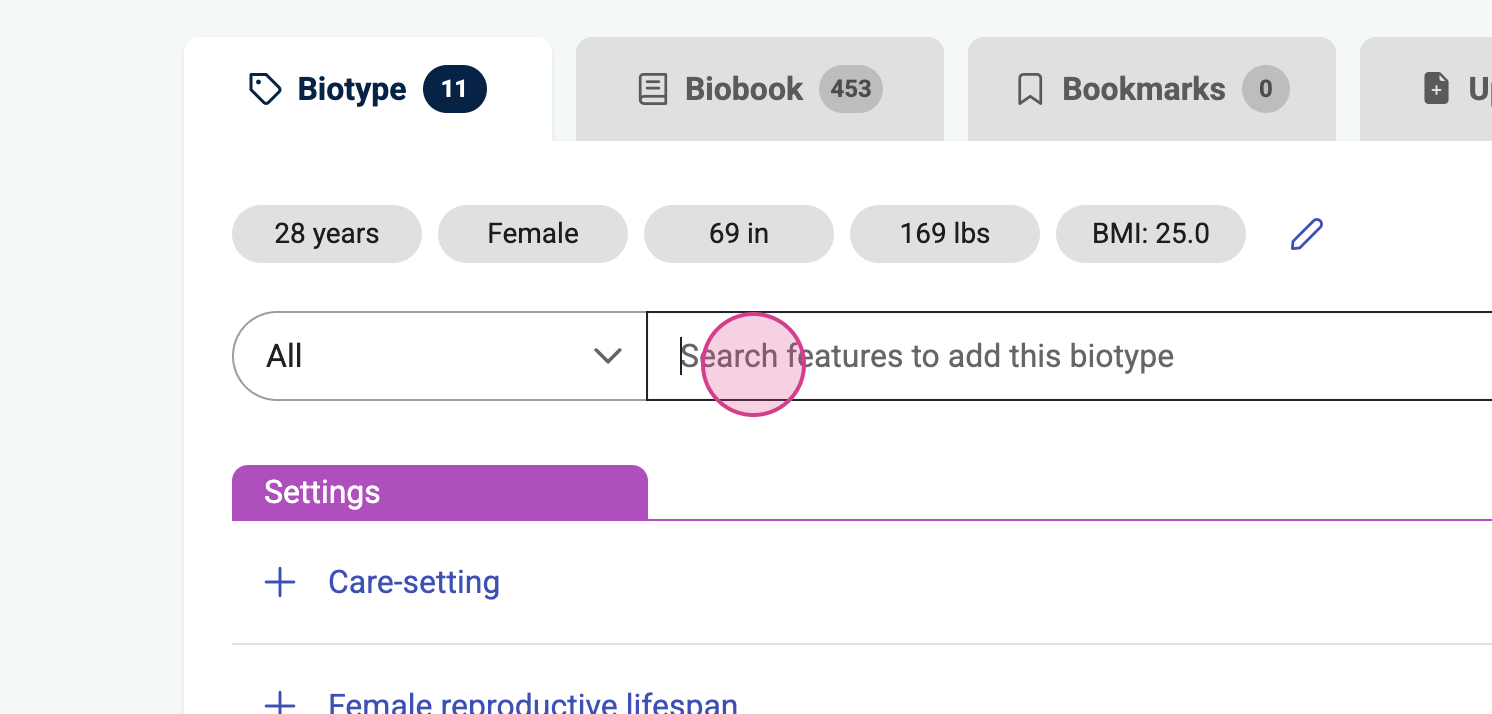
You can define this classification by selecting relevant key features
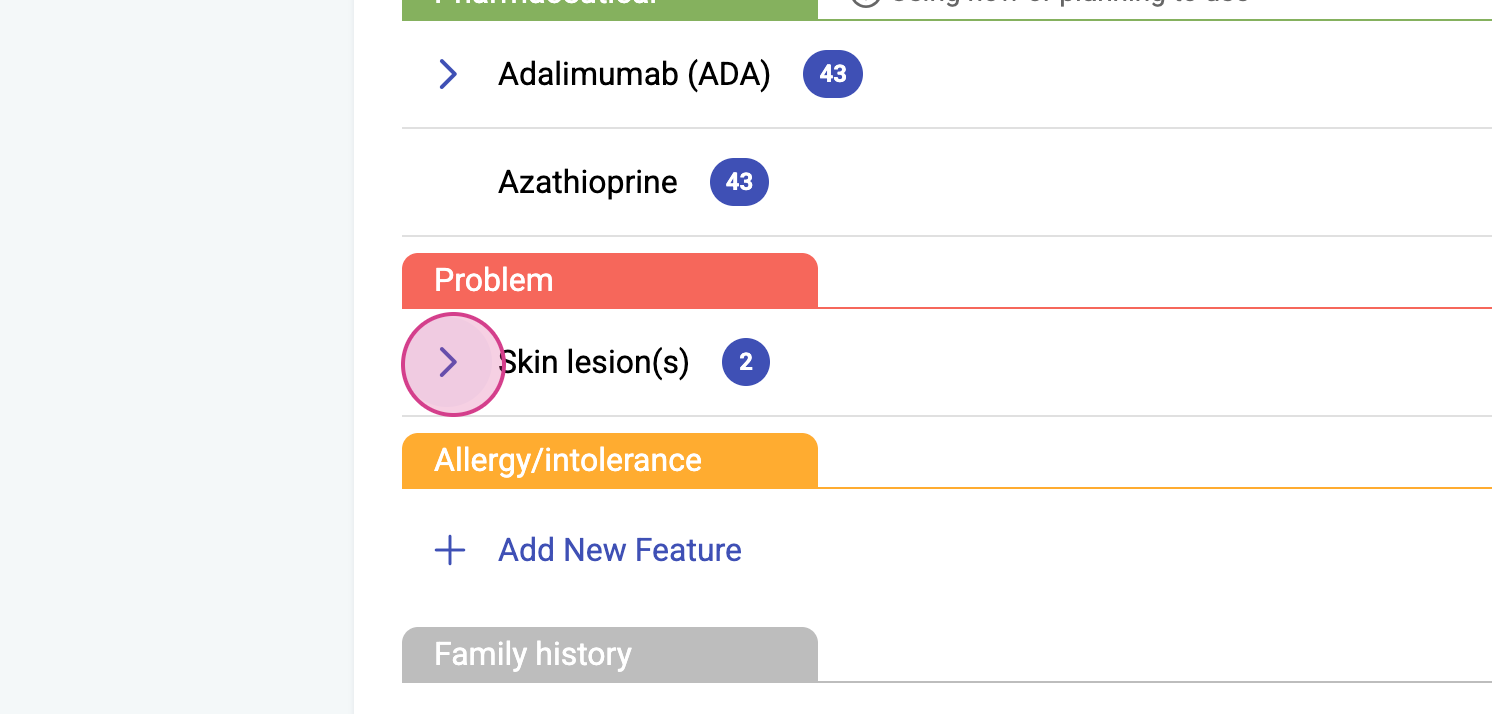
from here, for example select Psoriasiform eruptions and save changes.
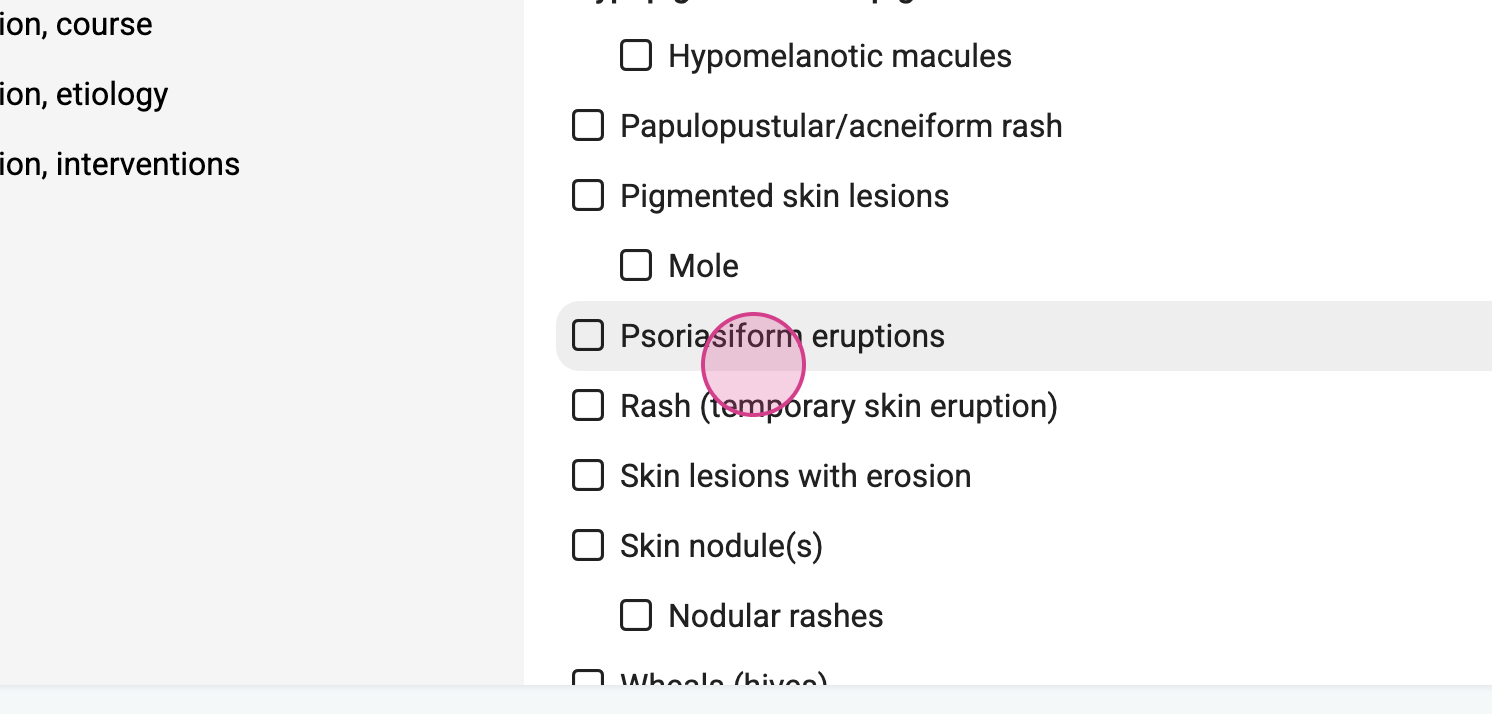
Additionally, you can check common skin manifestations of Crohn's disease.
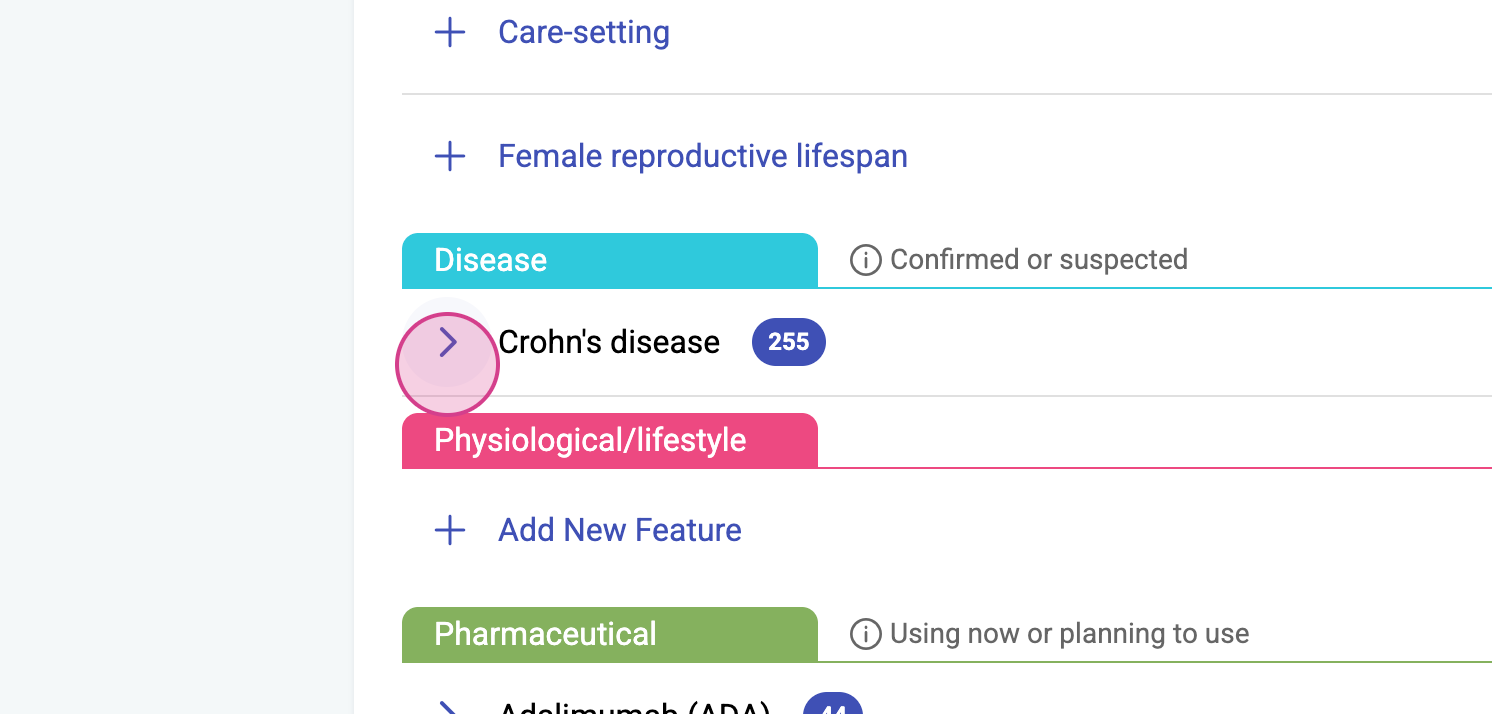
It's under the IBD, extraintestinal manifestation section. You see some potential mucocutaneous extra- intestinal manifestations, such as erythema-nodosum-like lesions, genital ulcers or hidradenitis suppurativa.
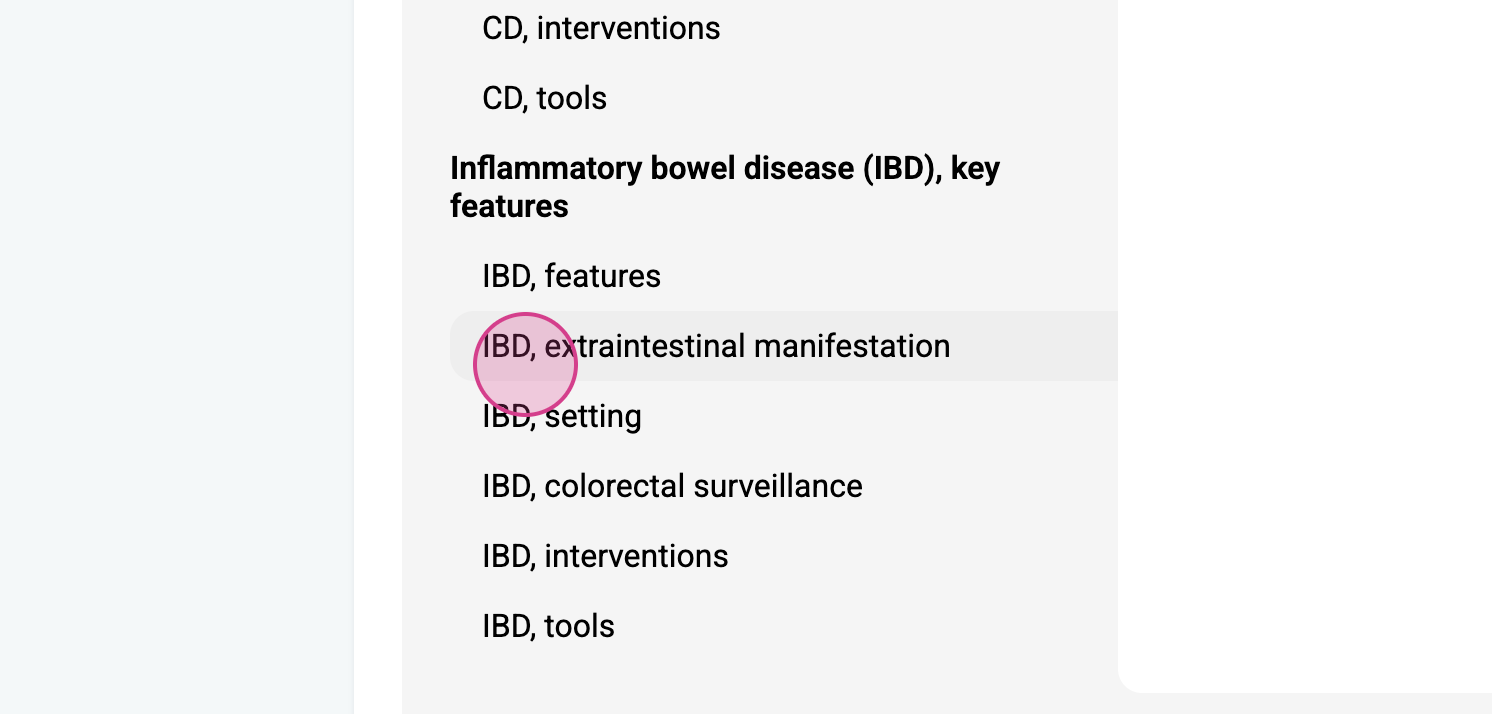
You can also explore Adalimumab, and explore TNF alpha inhibitor adverse events. You see some skin lesions also listed here.
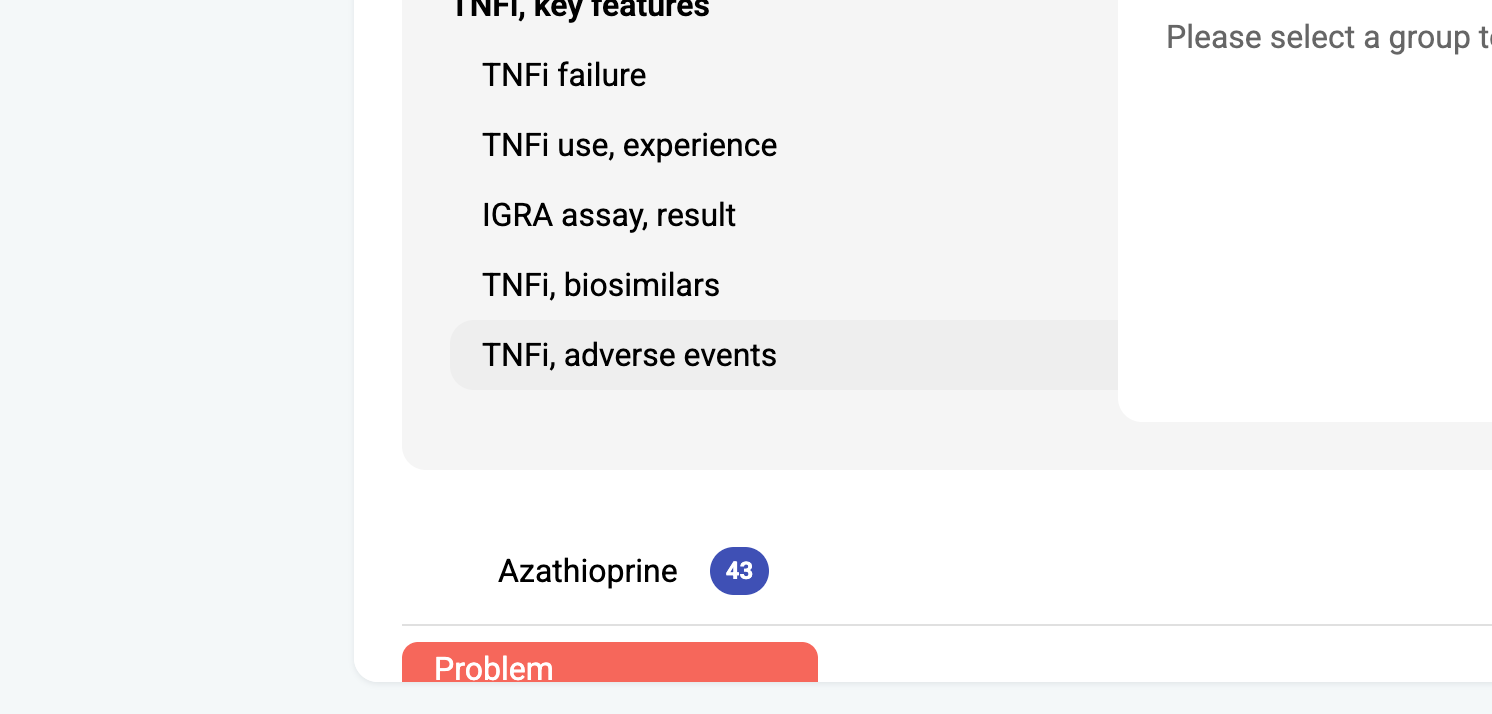
Next go to the biobook tab for a tailored information set.
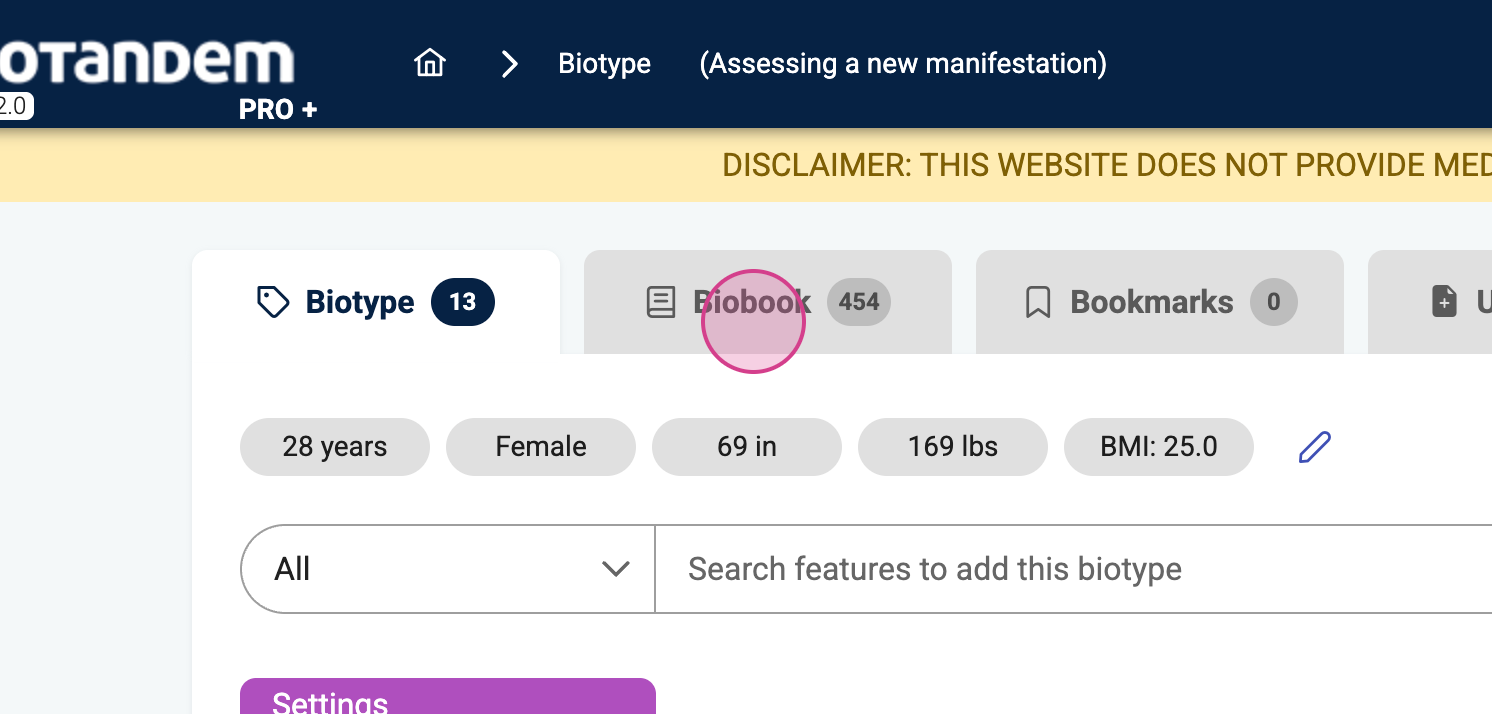
Since the new finding is a skin condition without selecting anything in the left index, just search skin from the here and see recommendations related to inflammatory.
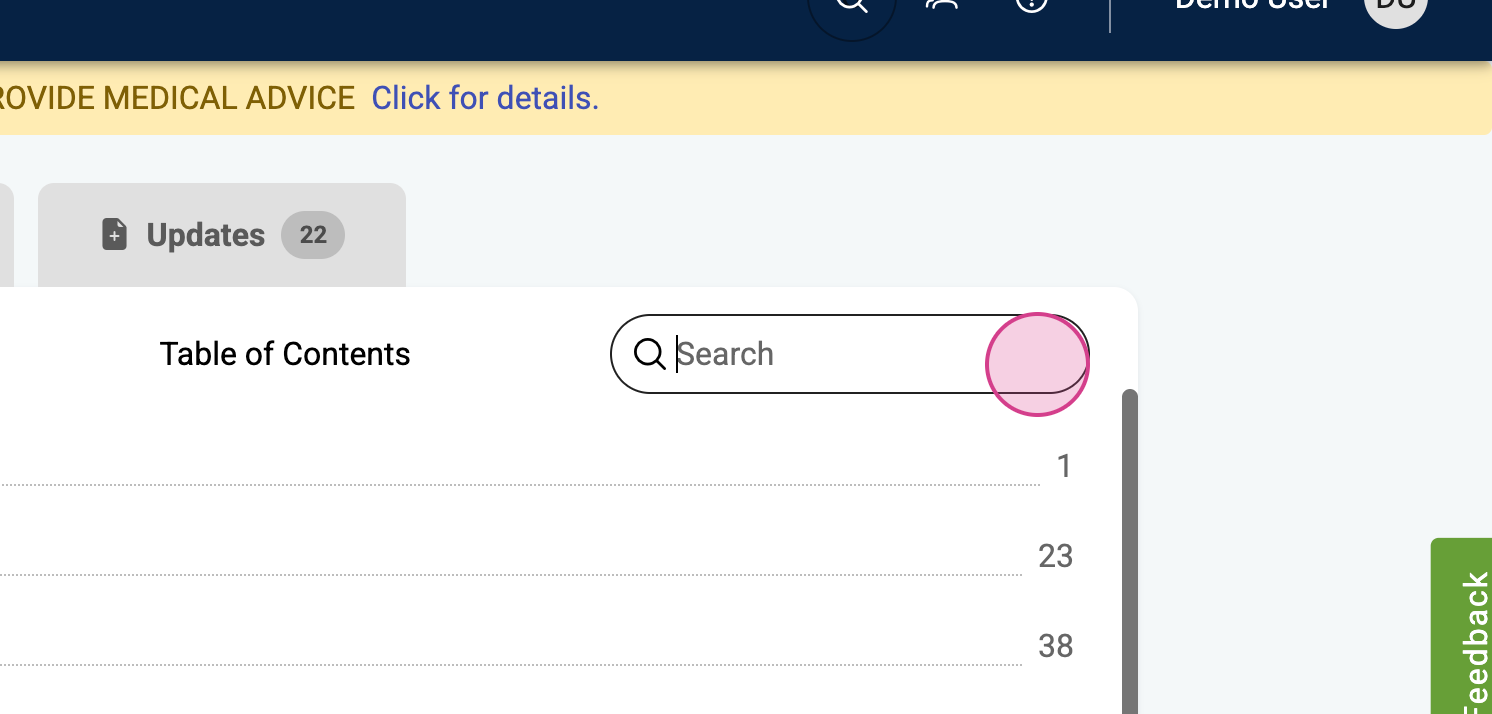
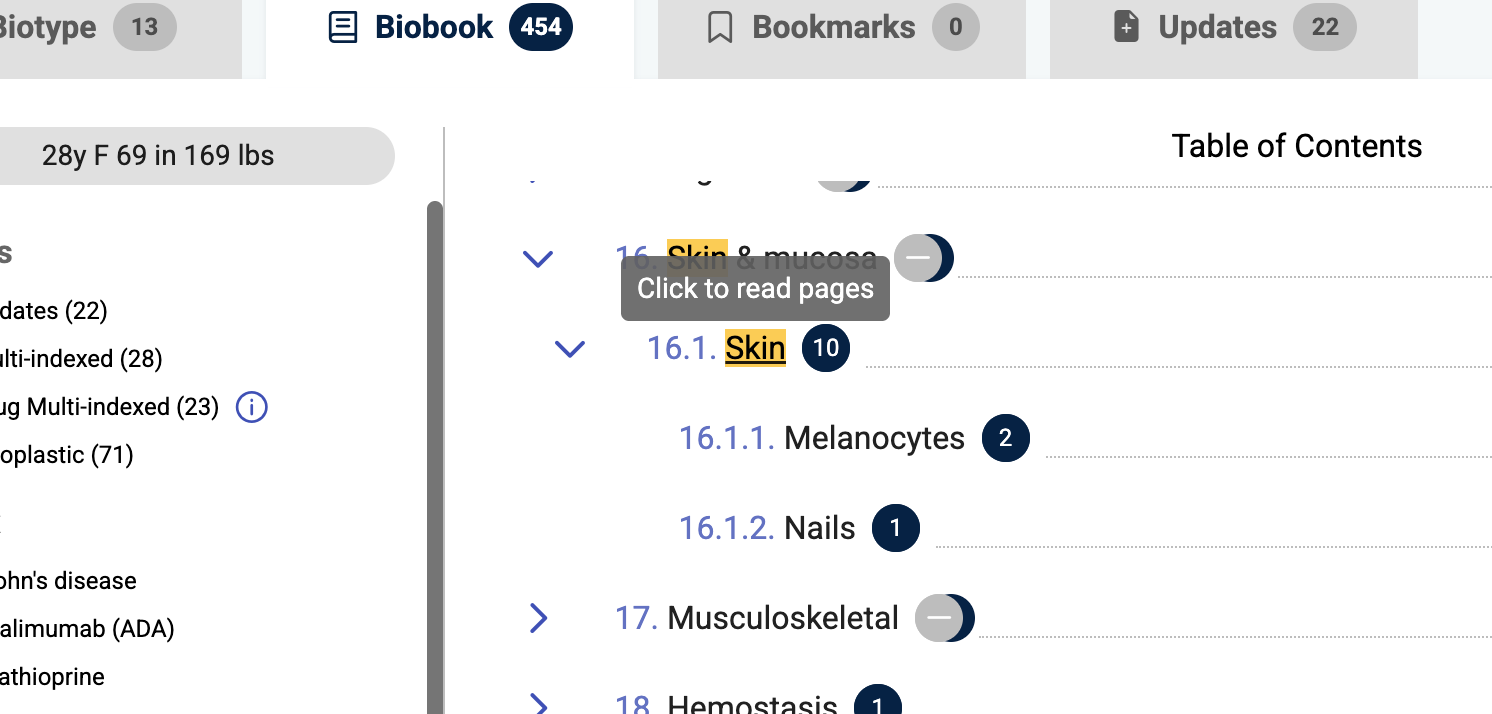
Inflammatory skin conditions related with biotype's medications, adalimumab or related with Crohn's disease.
e also find warnings about the neoplastic (tumor-related) skin conditions to monitor for Crohn's disease and azathioprine.
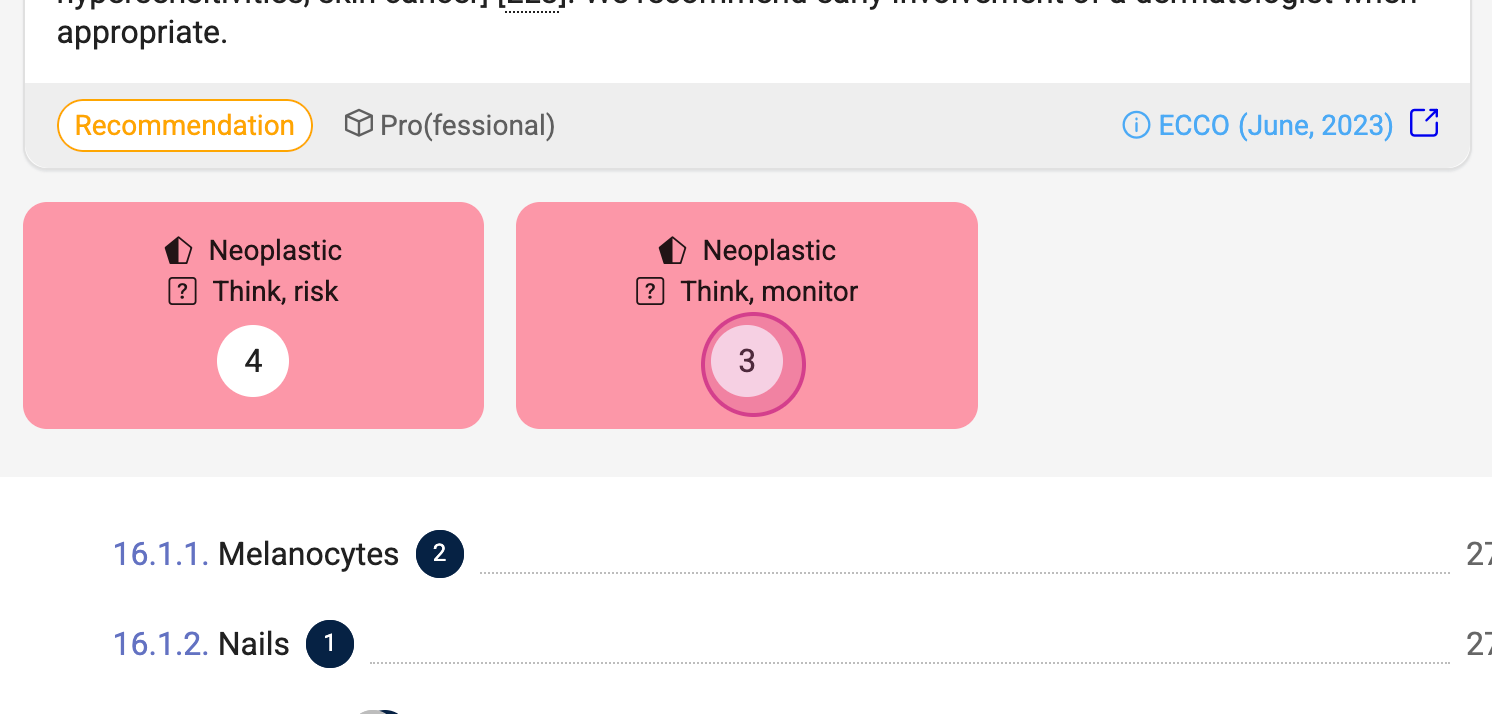
And the neoplastic risks also here for the treatments. If you prefer more focused approach, select skin conditions skin lesions from the left index and review the remaining selectable features to see if any are relevant.
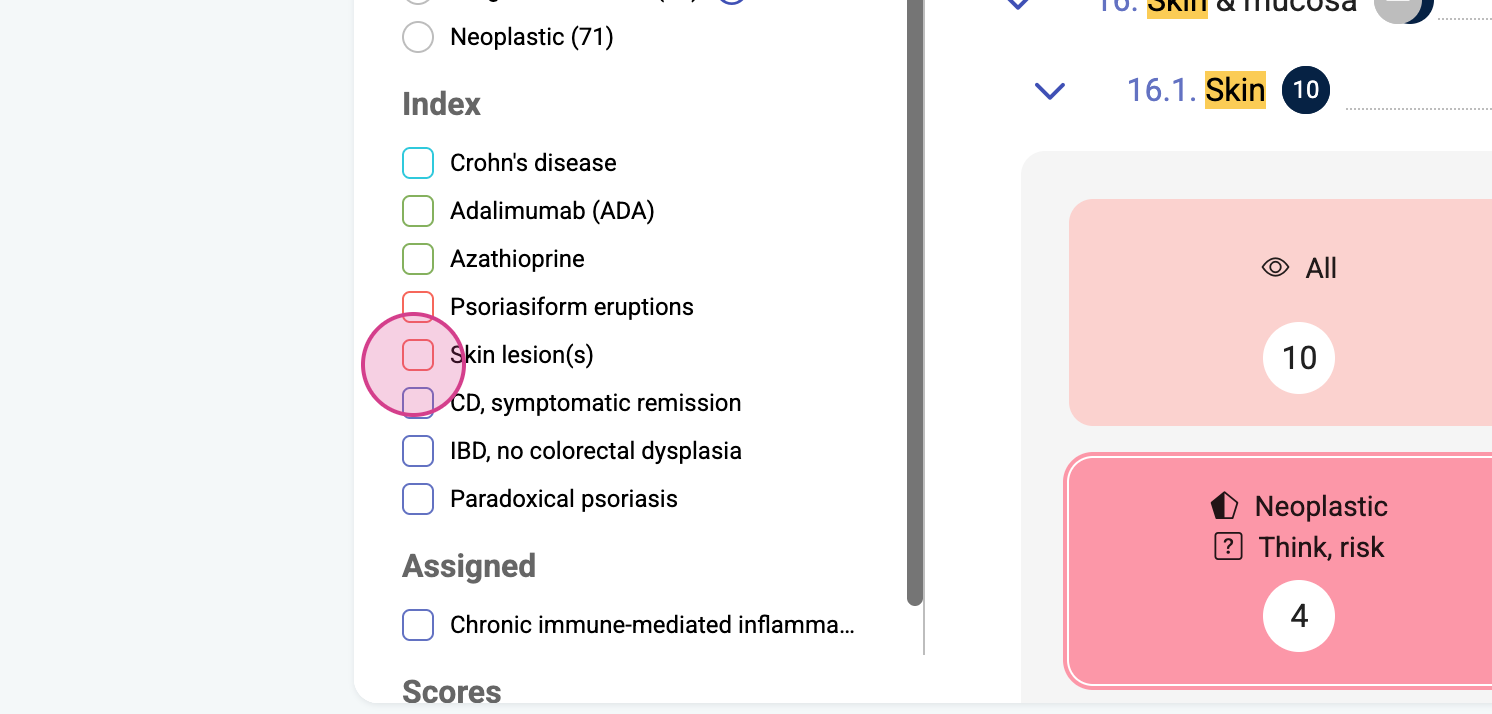
If no selectable features remain after selecting skin lesions, the issue is likely unrelated to the patient's existing conditions or medications and may be a new independent problem.
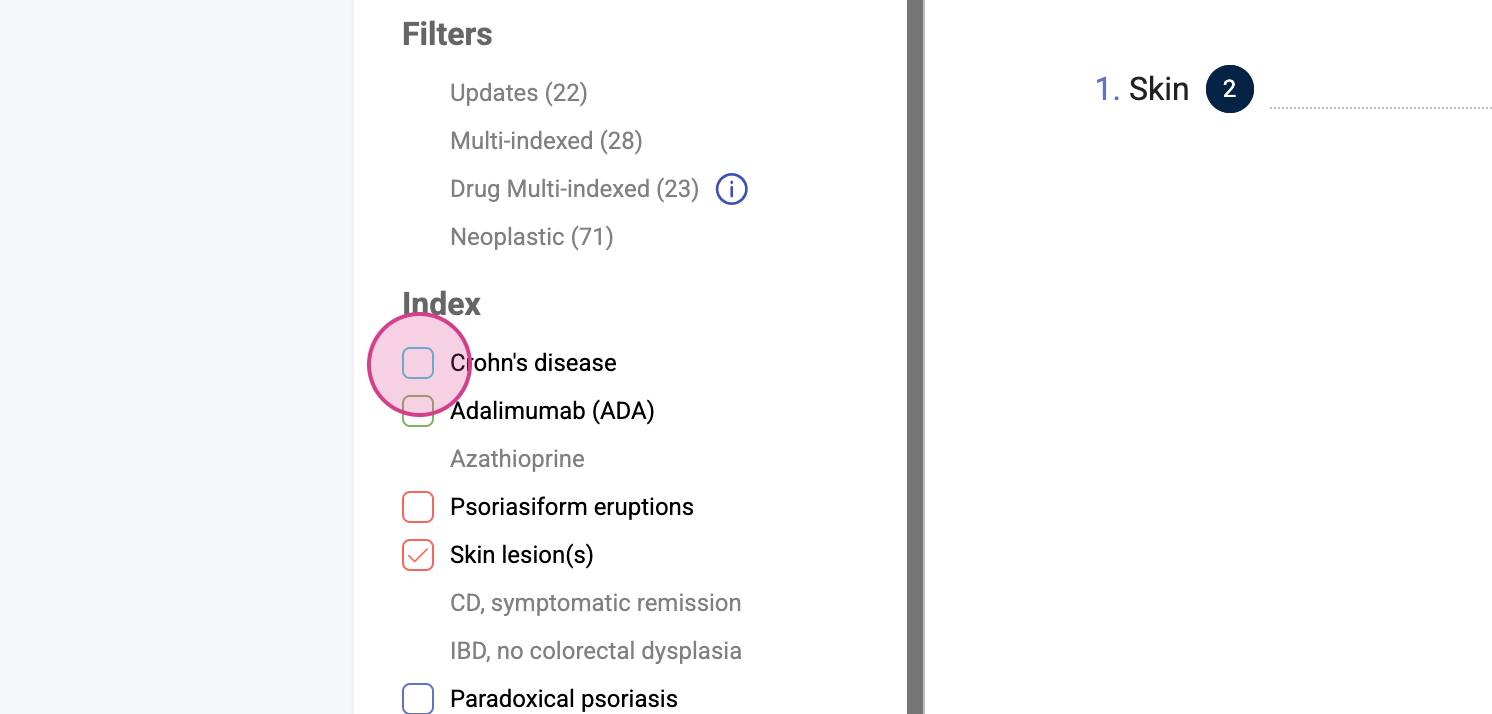
Here we see skin lesions related with Crohn's disease or related with adalimumab.
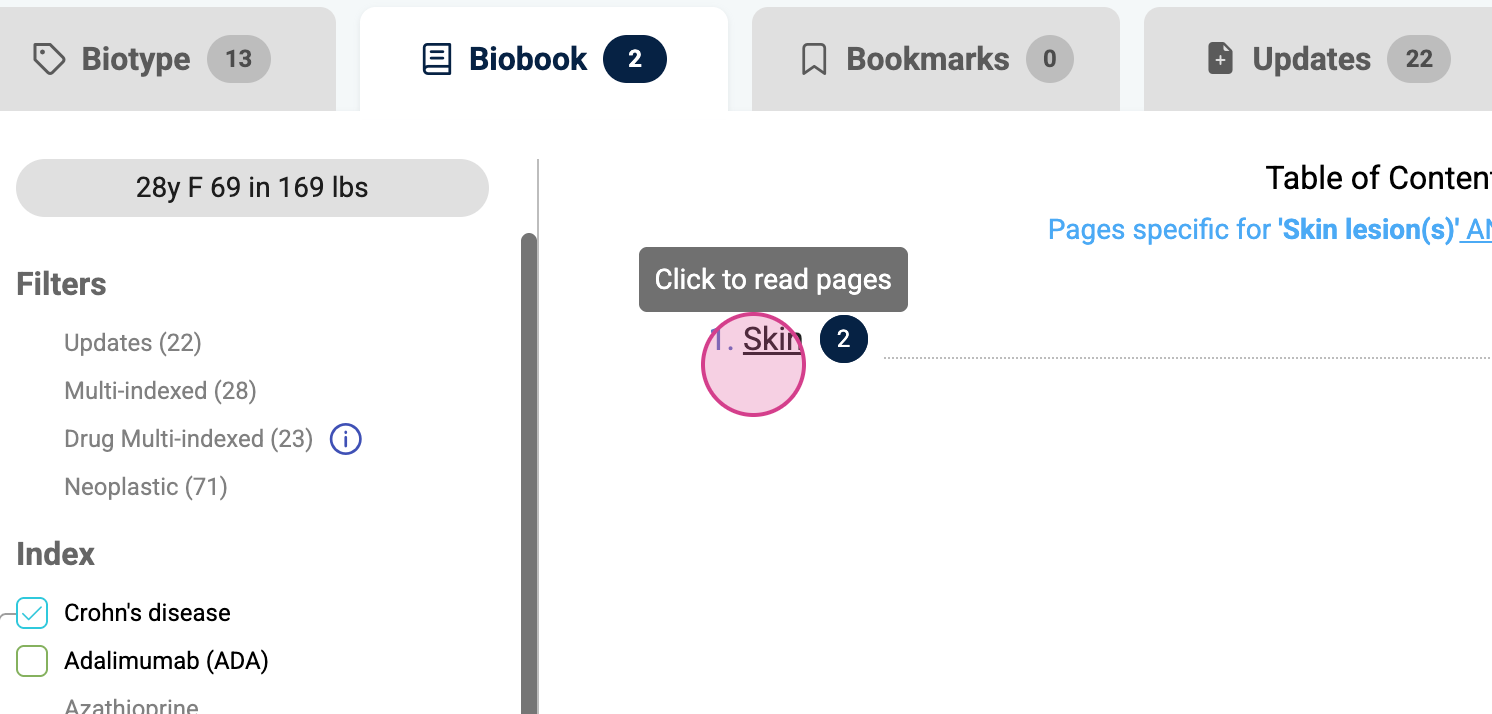
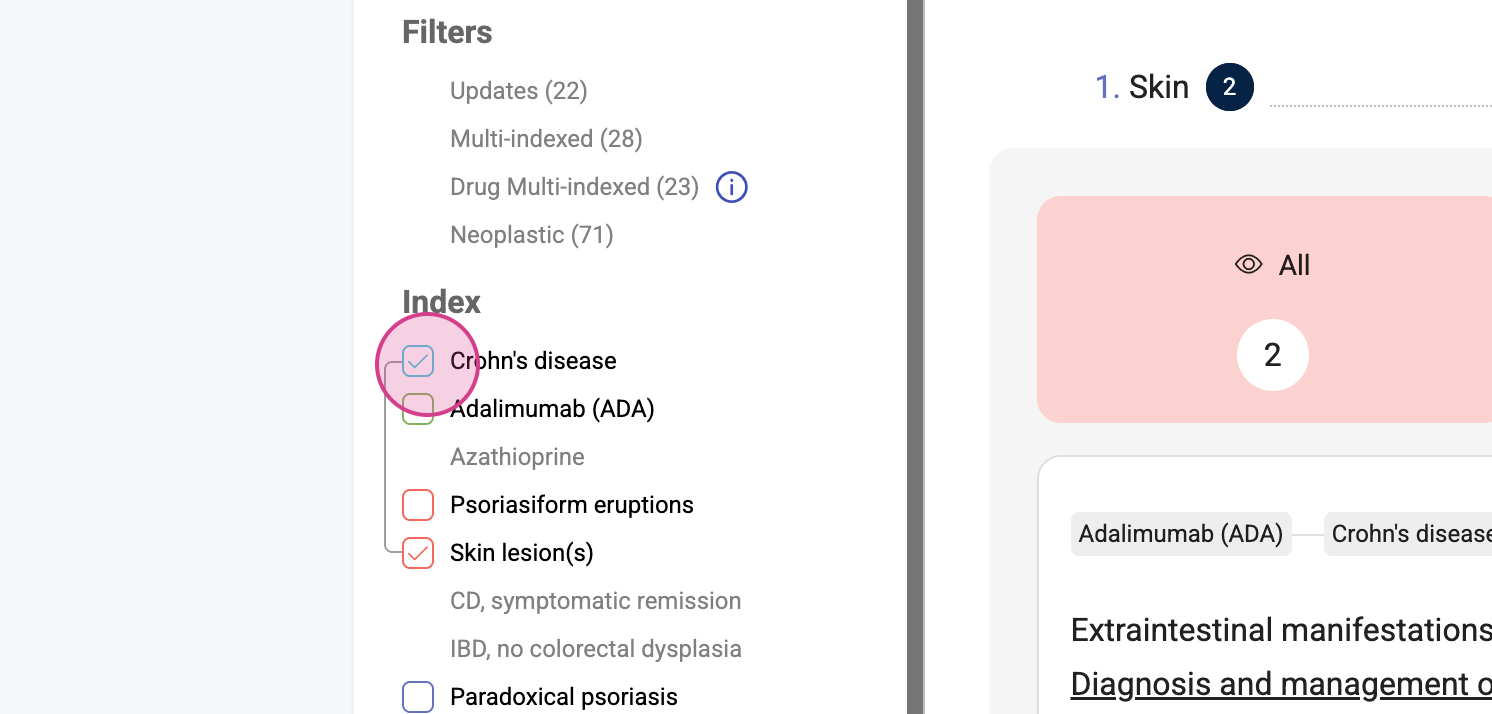
And also with paradoxical psoriasis
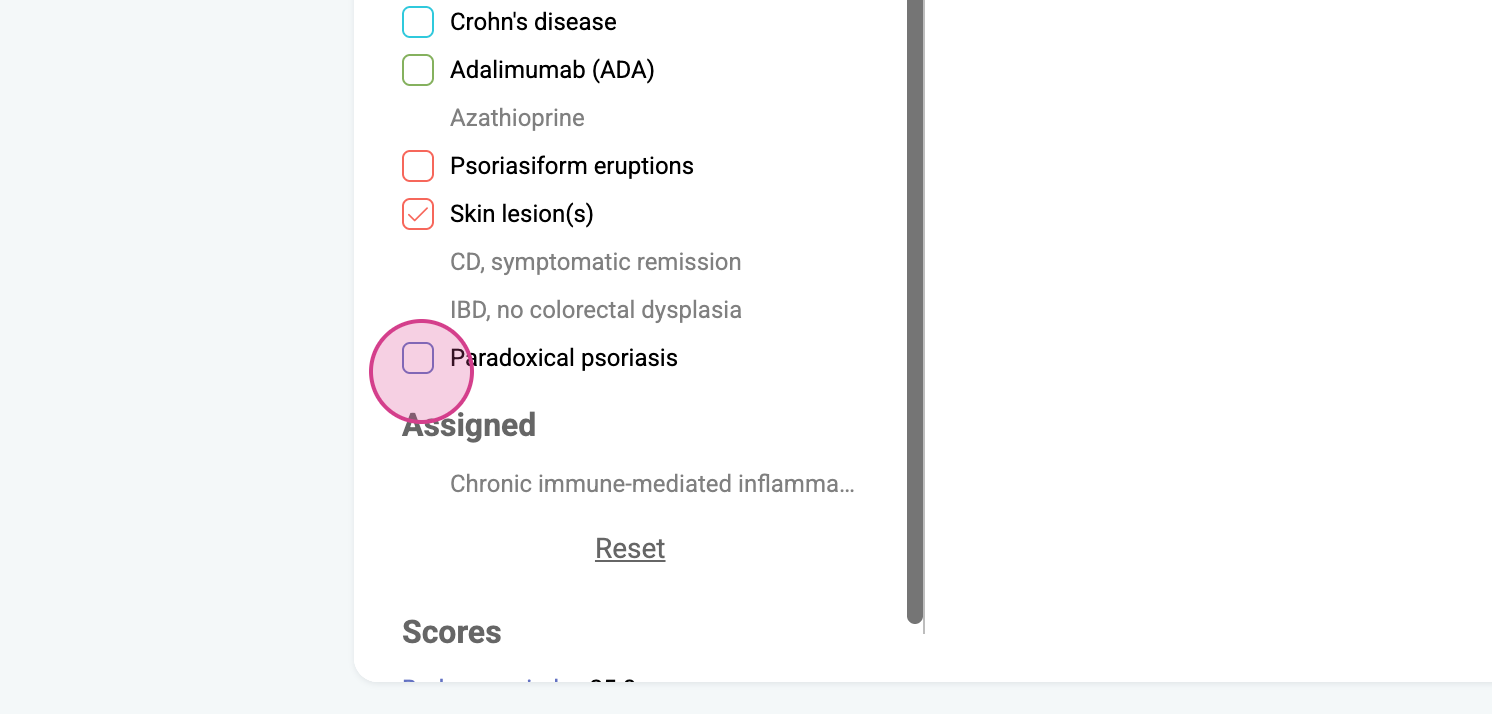
If you confirm psoriasis then add it from the search bar and after exploring the key features for psoriasis.
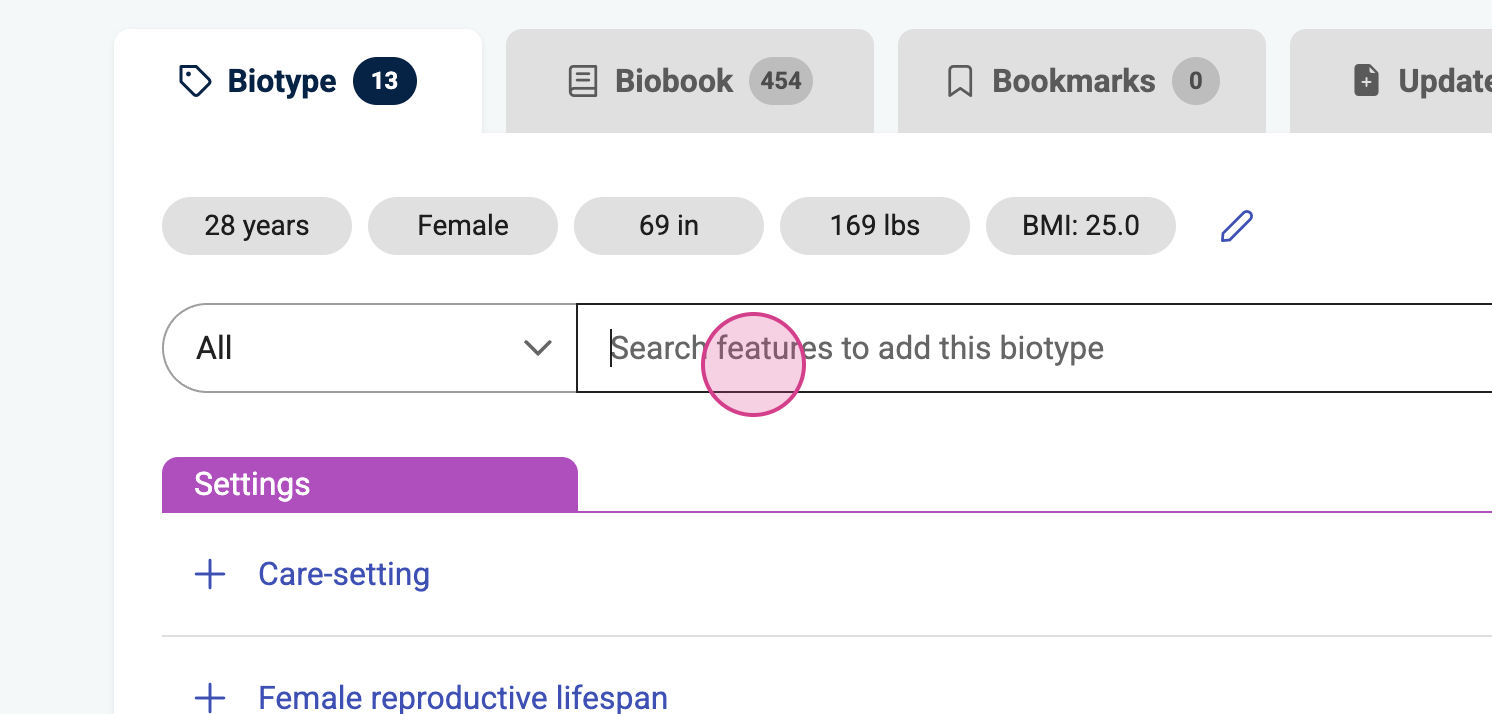
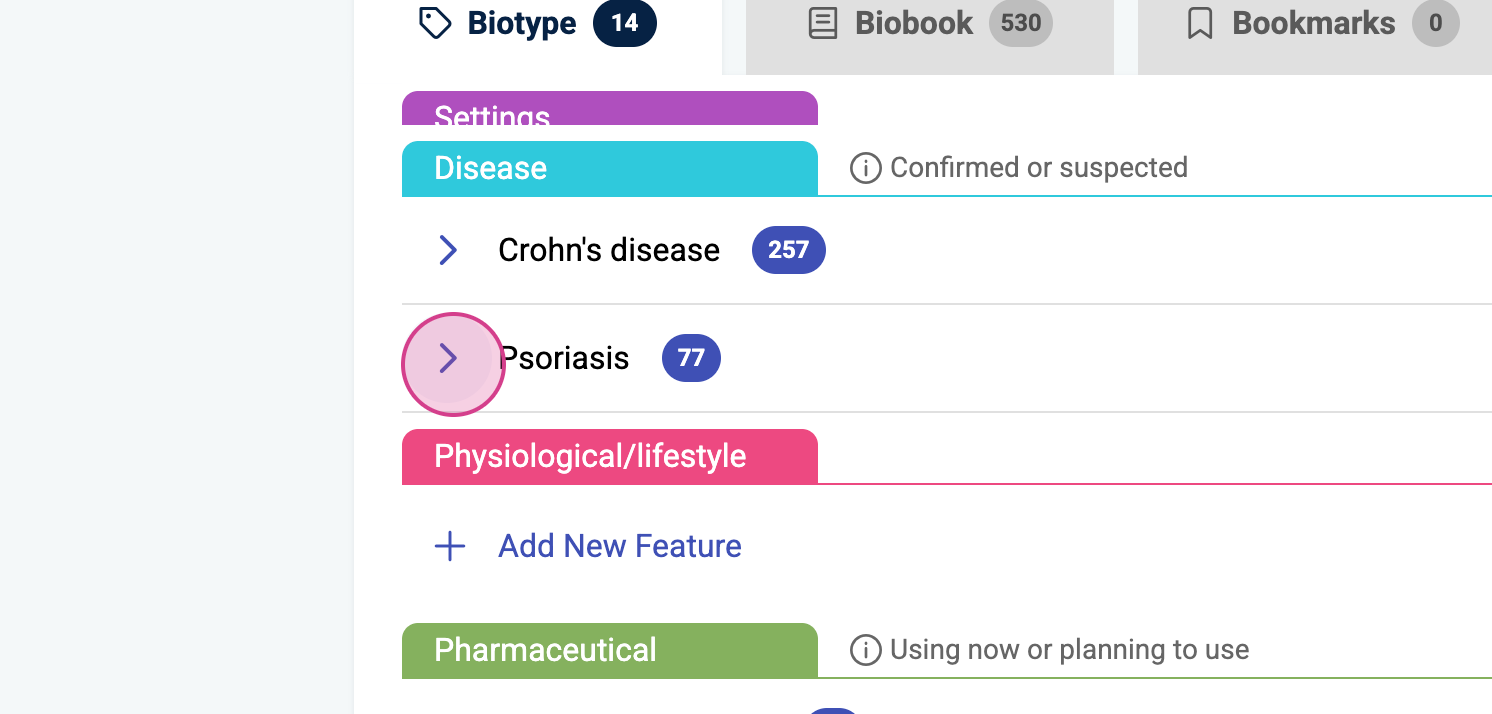
You see under the setting section you can select paradoxical psoriasis from here.
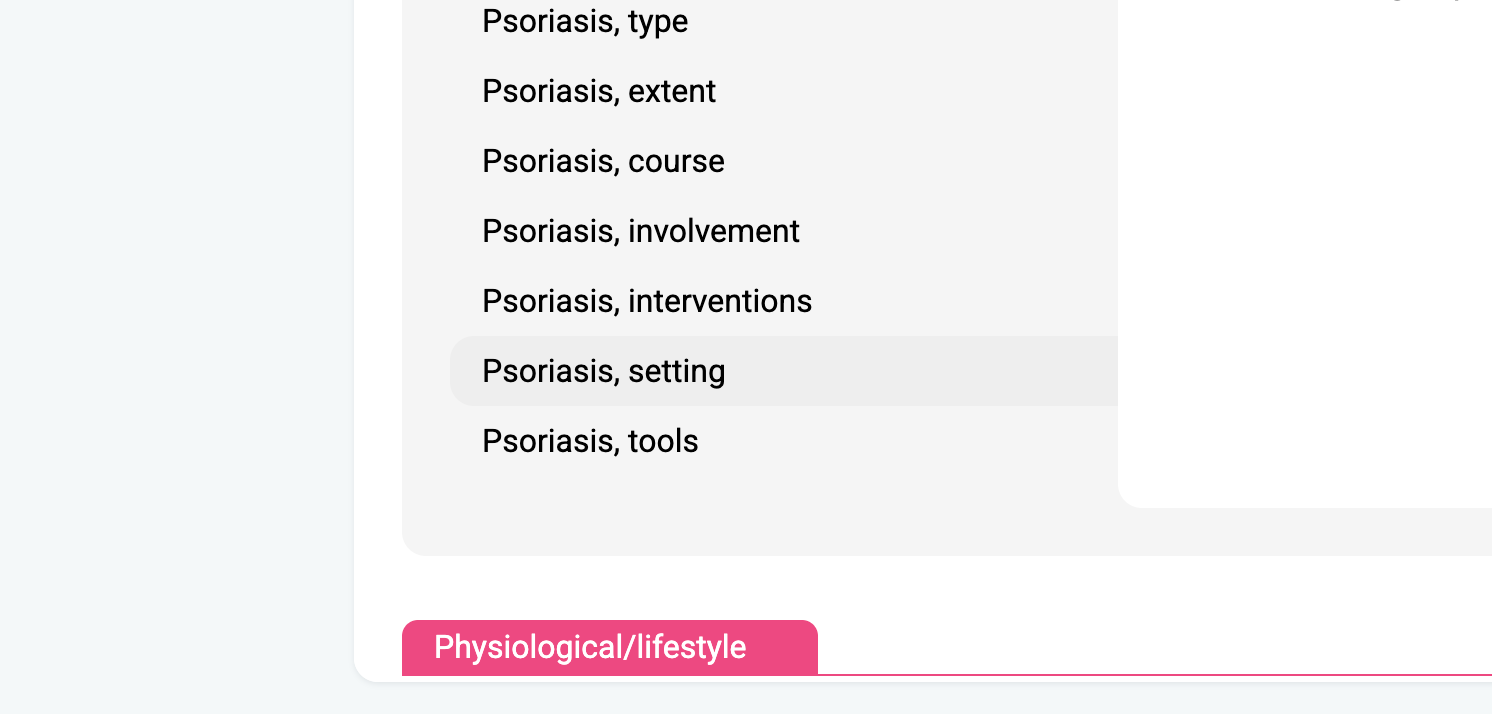
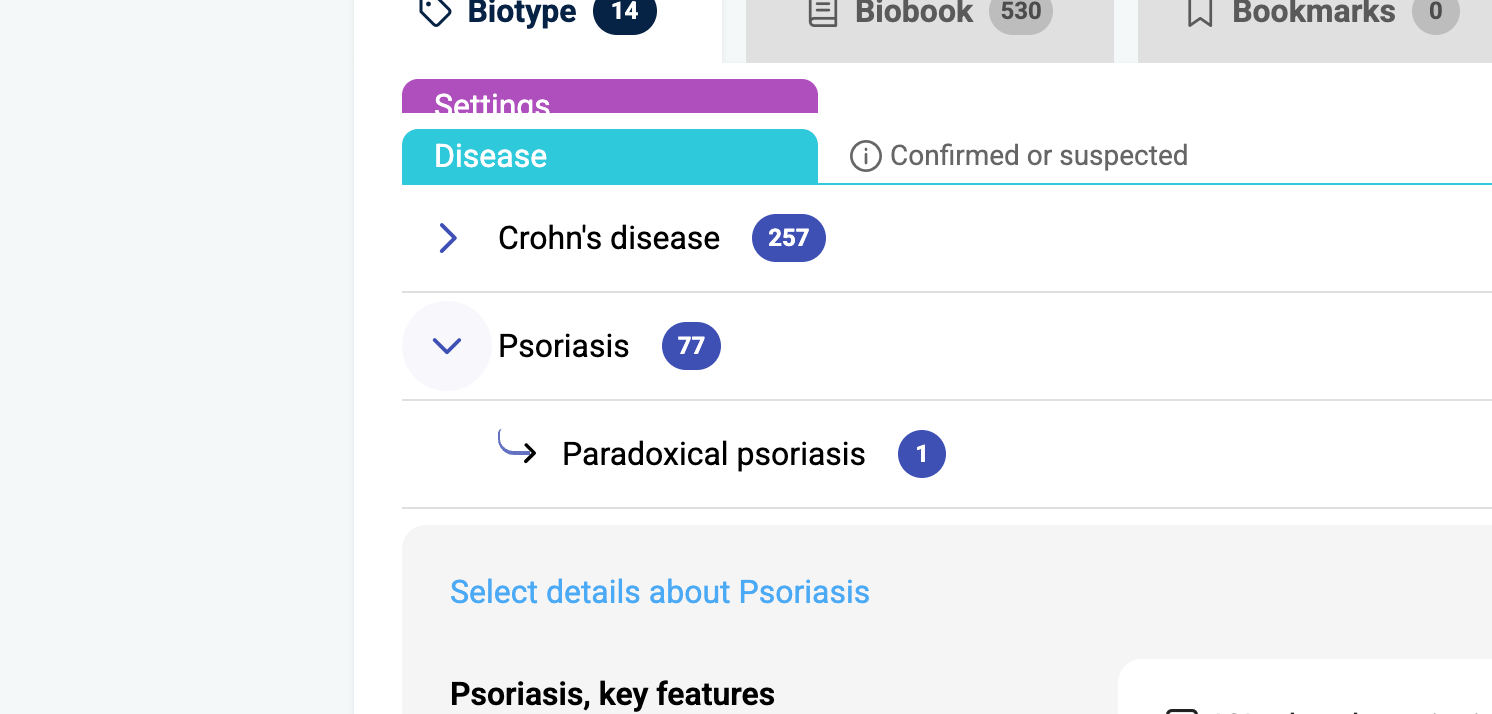
Any acute condition you remove from the biotype will still be recorded in the timeline for the future reference.
For this biotype, you can remove skin lesions and psoriasiform eruptions, because they are already diagnosed as paradoxical psoriasis.
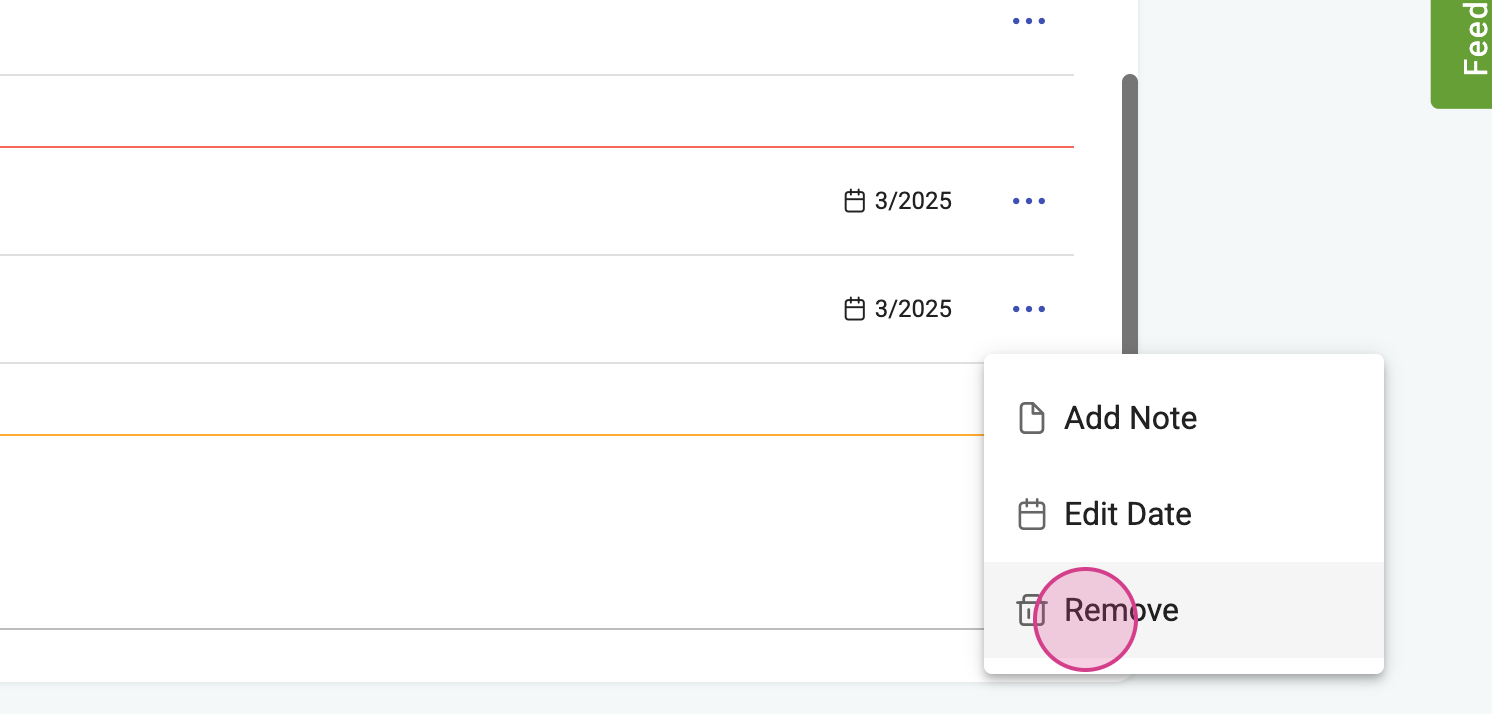
You may see removed acute findings from the timeline.
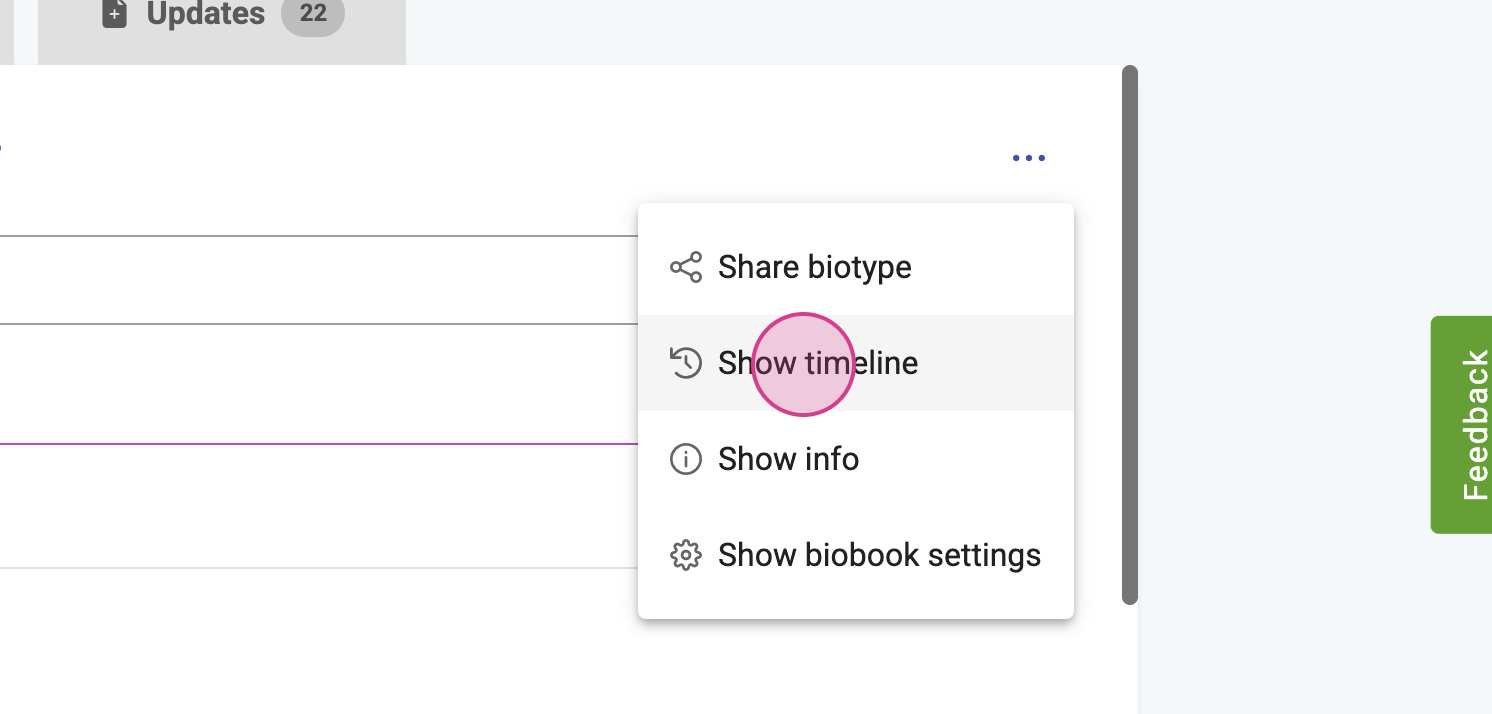
Before starting any new treatment for the skin conditions, check for potential interactions with the existing biotype features.
This approach helps determine whether new findings are a part of existing chronic condition, a medication side effect or a new independent issue, ensuring informed decision making for better patient care.
Thank you.
